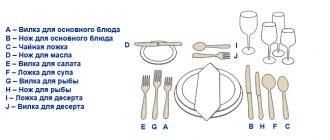A dishwasher has long ceased to be a luxury - it is as necessary and useful a household device as a washing machine or a vacuum cleaner. However, many people are just starting to use dishwashers or have simply never thought about how to do it correctly, even if they have not washed dishes by hand for a long time.
We asked several questions about the operation and selection of dishwashers to Alexander Kryuchenkov, leading product manager at the famous European manufacturer of household appliances Candy .
What can't be washed in the dishwasher and why?
The operating instructions for any manufacturer's dishwasher contain a fairly detailed list of items that are not intended for machine washing. Here are some examples.
- Items made of wood. Water and high temperatures quickly cause the surface of wooden products to wear out.
- Silver plate. Under no circumstances should silverware be washed together with dishes that have yolk or mustard residue on them, as this will cause the silver to darken.
- Some products are made of plastic. It is necessary to follow the markings on the product to determine whether it can be washed in a dishwasher. If the marking does not allow such a product to be washed in a machine, then washing it will soon lead to deformation of the plastic.
- When washing glass products, you also need to look at the markings and, of course, use only delicate programs. An incorrectly selected mode and/or washing glass that is not intended for machine washing will lead to clouding. In the worst case, the glass may even burst.
- Hood filters can be washed, but only if permitted by the manufacturer, and always separately from the dishes.
For more information about what can and cannot be washed in the dishwasher, read our separate article.
- Exploitation
What can be washed in the dishwasher: answers to popular questions
First rules of use
Like any device in the kitchen, a dishwasher has a number of basic rules of use that are important for proper operation and high-quality cleaning of dishes:
- Before loading dishes into the basket of the device, it is necessary to remove all food residues, otherwise no dishwasher cleaner will help in its operation.
- Any containers and vessels must be immersed upside down.
- The instructions say not to overload the dishwasher as this may interfere with the movement of the blades.
- It is recommended to place the most dirty dishes in the lower baskets, and the least dirty ones - in the upper ones.
- Stabbing and cutting devices are installed with the handle facing up.
- Plates should only be placed vertically and the question of how to use the dishwasher will disappear by itself.
- Fragile dishes (in particular, crystal) must be cleaned in delicate washing modes.
- To prevent thin glass dishes from becoming dull, you can use special products that prevent the appearance of plaque.
Which detergent is best for the dishwasher?
Nowadays you can find a variety of detergents in stores: from the simplest loose powder to ultra-modern multi-component gel capsules. Of course, tablets or gel capsules, thanks to various additives, deal with stains quickly and effectively, but the cost of such products is much higher.
The powder detergent will also cope well with stains and will show excellent washing results if you follow the rules for placing dishes in the machine and selecting the appropriate settings for the supply of rinse aid and salt to soften the water hardness.
By the way, cars are tested for washing quality using powder detergents. This information once again confirms the fact that powders do their job perfectly, and additives in tablets and gel products enhance the quality of washing thanks to the latest developments in the chemical industry.
Draining dirty water
If it is necessary to move or repair equipment, it is important to drain the water from it. To do this, you need to disconnect the drain hose from the siphon (it is recommended to use rubber gloves) and direct it into a container for dirty water. The same procedure can be done if the hose is clogged for subsequent cleaning.
Do I need to service the machine myself?
Necessarily. It is necessary to clean the machine at least once every 3 months with special products for dishwashers, which are easily found in household appliance stores or hypermarkets. If the machine is used every day, then it is worth carrying out maintenance more often - once every 1–1.5 months.
When caring for your machine, be sure to pay attention to those places where dirt and grease may be hidden, and wash them manually. Most often these are areas near and under the rubber door seal. The filter of the machine, located at the bottom, should also be removed at least once every 2 weeks and washed thoroughly.
What to do if the machine stops working?
Any equipment used at home is prone to some breakdowns and dishwashers are no exception. However, a sudden stop in work may not always be associated with a breakdown. Among the main reasons:
- turning off tap water;
- the door is not fully locked;
- The dishes are not installed correctly;
- accidental disconnection of the unit from the outlet or power outage;
- clogged drain hose;
- wrong mode selection.
Do I need to use salt if I have 3 in 1 tablets?
Dishwasher salt should always be used, no matter what primary detergent you choose. The tablets may contain a certain amount of salt, designed for average water hardness. But in the same city in different areas there can be completely different water hardness. Moreover, the composition of water can change from day to day, even in the same area.
To make it clearer, let's figure out why salt is needed in general. Many people know that it is worth using, but they are not entirely sure why.
So, a device called an ion exchanger is responsible for softening the water in the car - it contains a special resin. Water passing through it is softened due to the chemical process of ion exchange. The resin takes calcium from the water, which makes the water harder, and releases sodium. The sodium in resin is not infinite - and this is where salt comes into play. It is needed for resin regeneration and reverse replacement of calcium with sodium. Failure to use enough salt will damage the ion exchanger - and operating the machine without it will damage the entire device.
We place objects correctly
Before loading, take the time to clean the plates from the heaviest dirt. First, load the lower basket: place large plates on the sides, smaller ones in the center, and place a tray with spoons and forks there, handles down. The lower compartment can also be used for pots and pans.
If you don’t want to end up with poorly washed dishes after washing, place the items in the basket so that the water thoroughly washes the items both inside and outside.
Place frying pans, colanders, and ladles with long handles only horizontally, as they can interfere with special rotating devices (rocker arms) inside the machine.
When you need to wash very dirty dishes, you can load only two-thirds of the suggested number of sets and turn on the pre-soak. If the dishwasher is designed, for example, for 12 sets, load only 9. And place the devices through one cell so that the water can thoroughly wash away all the dirt.
A set is a set of dishes necessary for one person: two plates (for the first and second), cutlery, saucer, cup.
Use the upper basket for cups, glasses, and small items. Place glasses, cups, glasses, and deep plates upside down (and not even sideways) so that the soap solution does not collect at the bottom and leave a white residue. Make sure that fragile glasses and glasses do not come into contact with other objects.
Never stack items one inside another, because after the end of the wash cycle you will end up with poorly washed cups and plates and find a white coating on them from detergent residue.
Can a compact countertop dishwasher clean as cleanly as a full-size dishwasher?
The size of the machine does not affect the quality of washing: we already said above that it depends mainly on the location of the dishes. However, the size of the machine affects the comfort of its use.
A small tabletop model is suitable for a person who lives alone, or for a couple - but no more. If a family consists of 3-4 people, then you will need at least a narrow car with a width of 45 cm and a standard height of 85 cm. And if you have a large family of 5 or more people, then you definitely need a standard car with a width of 60 cm.
In fact, a dishwasher is the kind of thing where “the more the merrier.” So, if possible, then for a small family you can safely take a model with a width of 60 cm. Because in narrow models you often have to run two sinks a day, especially after guests, and this shortens the life of the appliance.
A full-size machine will allow you to wash the entire volume of dishes at one time, including pans and pots. Also, the more spacious the machine, the easier it is to wash large items: for example, oven trays, filters from hoods, glass from the oven (if allowed by the oven manufacturer).
Dishwashing modes
Choosing the right dishwashing mode plays a big role, since to a large extent the result of the procedure depends on it. In the most sophisticated models there may be many such modes, but the basic ones are the same everywhere.
Quick wash mode
The quick dishwashing mode is suitable if the dishes are not too dirty. For example, if it was used for drinks or cut fruits. It is not suitable for dirtier containers and devices.
Pre-soak mode
How to use the dishwasher if the dishes are covered with greasy deposits or are very dirty? First of all, before loading, you need to remove all food debris from it, and after loading, select the “soaking” mode, which is found on all Hansa-type units, and then the standard washing function. An option like “Very Dirty” is also suitable for these purposes.
To save energy, you can soak the dishes manually before loading. However, it is highly not recommended to allow hand wash chemicals to enter the work basket of the unit.
Is it possible to open the door to add dishes while the cycle is already running?
It is possible, but there are several features.
- Firstly, you need to be careful not to open the door right away, as this can lead to burns and splashing water. You need to open it slightly, wait until the spray arms stop rotating, and only then open the door completely to add dishes.
- Secondly, it is worth understanding that if you are trying to add an item in the middle of the process, then there is no point in talking about any high-quality washing. Adding only at the beginning of the cycle will be effective.
The AddDish function has been developed for the Candy Brava series dishwashers. This is an indicator that notifies you whether it is possible to add dishes at the current moment - or whether there is no point anymore, since the item will not have time to be cleaned. While the indicator is on on the control panel, you can safely add dishes and be confident in the high quality of the wash. In models controlled via the simply-Fi app, this information can also be seen in the app itself.
Finally, I would like to draw attention to the installation of the dishwasher, as it often raises questions among consumers. But first, let’s clarify that machines can be free-standing and built-in.
Safe use
Safe use of equipment will not only help avoid possible injuries during procedures, but will also extend its service life. It is worth noting that the safety rules for each model may be different, since much depends on the design of the unit. The main recommendations are as follows:
- It is important to always use rubber gloves when carrying out procedures;
- Do not touch heating elements and wires with your hands;
- Do not open the machine until it has completely cooled down;
- lack of grounding can not only damage the unit, but also cause injury;
- Under no circumstances should you use faulty equipment. On the one hand, this is fraught with poisoning by detergents, on the other – with dangers, including short circuits;
- You should not allow any other items other than kitchen utensils and containers into the washing procedures;
- Do not open the door or turn off the power from the outlet until the machine stops working completely.
Test run of the dishwasher
So, detergents are loaded into the compartments and all communications are connected. The water valve on the tee that drains water to the PMM is open. All that remains is to press the power button and start setting up the household unit.
Inside the chamber there should be only nets, baskets and other utensils included in the dishwashing kit
The type of detergent and salt consumption have already been set. Switch the dough rinse aid flow rate to the minimum value. With further use, you will select the optimal level of consumption.
The rinse aid consumption is set by moving the arrow (position 1 corresponds to the minimum level)
The setup manipulations are completed by choosing a program that will allow you to wash the camera and all the parts located inside as efficiently as possible. To do this, set the longest wash program with the highest water temperature .
Bosch PMM control panels of different models - built-in and partially built-in
Close the door, launch the program and monitor the status of communications and the speed of work at different stages. If the PMM is working, then:
- The water supply runs continuously, the machine does not stop the program;
- the liquid is heated over a short period of time;
- the spent liquid is completely drained into the sewer;
- After the drying process, no moisture remains inside.
Selecting the desired program
After loading detergents and kitchen utensils, another important stage begins - choosing the appropriate program for the operation of the PMM. All modes are divided into several groups, the names of which may differ among different manufacturers.
Main programs:
- Washing with pre-soaking – the program is designed for equipment with burnt or dried food residues and a large amount of fatty deposits. The work is carried out in two stages - preliminary and main washing.
- Intensive wash – designed for very dirty dishes. The effect is achieved due to the high temperature of the water. This mode cannot be used for dishes made of plastic or with delicate coatings.
- Standard mode – allows you to wash dishes with a moderate degree of soiling at moderate water temperatures.
- Economical program – used for washing relatively clean tableware, while the consumption of energy, water and detergent is minimal.
- Delicate sink – designed for plastic, porcelain and crystal dishes, as well as devices with delicate coatings.
- Quick wash – used to easily rinse plates, forks and spoons with detergent.
The first device and its operating principle
The very first dishwasher from 1880 had to be operated manually using a crank. Already in further versions a motor was included, but the equipment helped wash dishes with a terrible crash (and could break the cup). Inventor Josephine Cochrane patented it in 1893, giving rise to the first industrial developments.
The model for serial production was presented by the German brand MIELE (Mile). The modernized appliances looked quite nice, looked somewhat like a cylinder and rolled around the kitchen on three wheels.
The operating principle of a dishwasher is a mixture of cleanliness and environmental friendliness. At the same time, the device operates almost silently (the noise level ranges from 43 to 65 dB) and consumes few resources - a maximum of 2.8 kW/hour. There is one more advantage that all manufacturers try to adhere to - the preservation of natural resources. That is why samples from the latest lines consume less water and electricity: about fourteen sets of dishes can be washed in just eleven liters of water.
Such indicators cannot be compared with the resources spent manually.
But still, how does a dishwasher work from the inside in practice? What's happening?
Preparing for work
Buying a dishwasher does not mean that you can use it to immediately start washing dishes by connecting several hoses to the water supply and sewerage system. Before using your dishwasher, you should perform two important operations - proper installation and test washing.
A specialist can install the equipment, but if for some reason this is not possible, you can use simple instructions:
- Place the equipment in the place provided for it. The equipment can be built in completely, like the Electrolux EES 948300 L, and partially, like the BBK 60-DW203D. Or installed separately, like Weissgauff TDW 4017 D.
- Connect the dishwasher to cold and hot water supply - using inlet hoses, tees or manifolds. Although, due to the low quality of hot water supply, it is worth connecting the machine only to a regular water supply. In this case, the water is heated by built-in heating elements.
- Connect the dishwasher to the sewer pipe through a tee or siphon.
- Plug the machine's power cord into a power outlet. It is advisable that the line be equipped with a separate RCD circuit breaker.
Before the first start, a dry wash should be performed, without dishes. Its task is to remove dust, dirt and grease residues from the inner surface. The process involves the use of detergent powder, but does not require rinse aid, for which you can add a small amount of water to the compartment. After this, you should choose any mode with a high temperature - best of all, maximum. After completing the washing cycle, the equipment is considered ready for use.
- Home Appliances
Choosing a robot vacuum cleaner under 30,000 rubles: the best models











